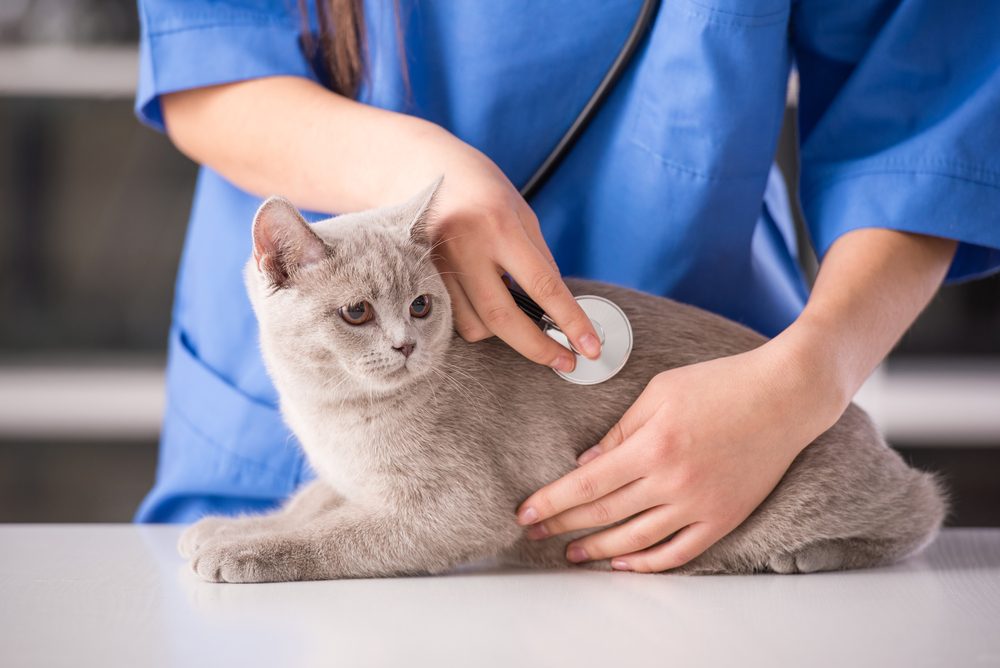

While anal gland/sac cancer (adenocarcinoma) is not common, it is an invasive disease that does not generally have a positive outlook. Usually seen as a rectal growth (mass) on a cat, it is also common to find the disease in the lymph nodes. Due to the type of disease, it is typically cancerous (malignant) and can spread quickly into other areas of the cat's body. There are treatment options available, usually surgical, that can help to improve an animal's chances for survival.
The most common sign of anal gland cancer is a rectal mass or tumor. The tumors are often small in nature. In addition to the visible signs of a tumor, cats that are suffering from the disease may be constipated or have difficulty defecating (obstipation), have a loss of appetite (anorexia), be excessively thirsty (polydipsia), and may seem lethargic.
This disease is fairly rare in cats. There is currently no breed that is a most prone to this type of cancer, but it is often associated with a hormone imbalance (parathyroid), as it is often found in the anal/genital area. It is also linked with high levels of calcium (hypercalcemia) in the body.
A fine needle is inserted into the cancerous anal mass (aspirate) and the cells are examined to rule out any other possible conditions. It can be challenging to determine whether the mass is malignant or not, so the needle biopsy is a useful diagnostic test. In some cases an incision and a full biopsy are needed to properly diagnose the mass. Some veterinarians will also use imaging tools to look at the mass, such as X-rays or ultrasounds.
The proper course of treatment is to surgically remove the tumor. The removal of the tumor and infected lymph nodes can prolong your cat's life. However, the tumor's removal is not a cure. Radiation may also be used for the prevention of locally recurring tumors.
After the tumor is removed, it is advised to continue monitoring your cat through physical examinations, X-rays, ultrasounds, and blood work. Calcium and kidney tests also work in monitoring the disease and its potential recurrence. The overall prognosis for the disease is poor, although surgery can substantially improve the probability for recovery.
Due to its nature, there is currently no way to prevent the disease.
Image: VGstockstudio via Shutterstock
 Estrus Symptoms after Spaying in Cats
Ovarian Remnant Syndrome in Cats
An ovariohystere
Estrus Symptoms after Spaying in Cats
Ovarian Remnant Syndrome in Cats
An ovariohystere
 Intestinal Parasite (Cryptosporidia) in Cats
Cryptosporidiosis in Cats
Cryptosporidium is an i
Intestinal Parasite (Cryptosporidia) in Cats
Cryptosporidiosis in Cats
Cryptosporidium is an i
 Birth Difficulties in Cats
Dystocia in Cats
A difficult experience is medica
Birth Difficulties in Cats
Dystocia in Cats
A difficult experience is medica
 Is there a Cat for People Allergic to Cats?
Is there a Cat for People Allergic to Cats?
Is there a Cat for People Allergic to Cats?
Is there a Cat for People Allergic to Cats?
 Swelling in Cats
Peripheral Edema in Cats
Swelling due to an exces
Swelling in Cats
Peripheral Edema in Cats
Swelling due to an exces
Copyright © 2005-2016 Pet Information All Rights Reserved
Contact us: www162date@outlook.com